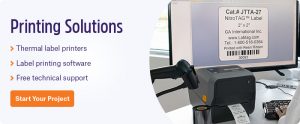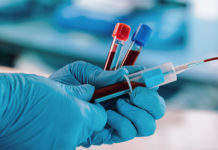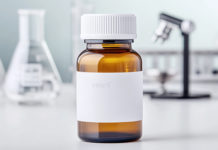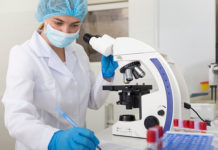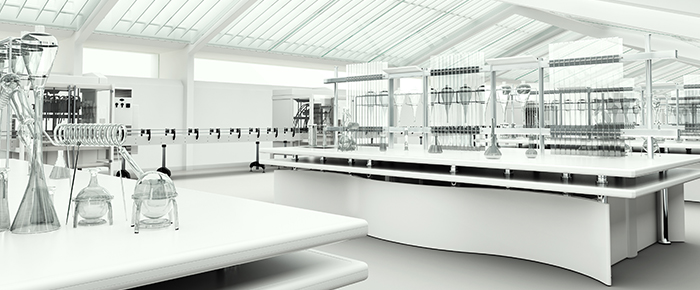 Starting a new lab is an exciting venture, full of promise, creativity, and new discoveries. It’s also not the easiest thing to accomplish. Considerable deliberation goes into starting a lab, including mountains of paperwork and countless decisions that you need to make. Here are some factors to consider when starting a laboratory that can help it become more productive, efficient, and above all, successful.
Starting a new lab is an exciting venture, full of promise, creativity, and new discoveries. It’s also not the easiest thing to accomplish. Considerable deliberation goes into starting a lab, including mountains of paperwork and countless decisions that you need to make. Here are some factors to consider when starting a laboratory that can help it become more productive, efficient, and above all, successful.
#1 – Organization
The first decision any new lab should make is how to organize its workflow, inventory, notebooks, and result analysis. A clear-cut system is essential to implement as early as possible because switching systems later may necessitate additional time and human resources the lab cannot necessarily afford. The main objective here is to choose a system suited to your research’s proposed needs. Several software types can serve as organizational systems, including a laboratory information management system (LIMS), which can manage workflow, inventory, and analyze results, often through a secure cloud-based system. You can also use electronic notebooks to keep detailed lab notes in place of classical handwritten notebooks while integrating seamlessly into most LIMS as well. Combining a LIMS with an electronic notebook provides a much more consistent process than traditional lab notebooks, as each step is verified by scanning barcodes or radio-frequency identification (RFID).
#2 – Lab Space
The space available for your research may depend on whether you’re inheriting space in an institution or designing a new lab from scratch. Regardless of your situation, it’s necessary to assess what workflow might look like in the long-term before planning. Ideally, you should design your lab space to optimize efficiency and promote collaboration between areas that need it. Open lab concepts are an excellent way to encourage the sharing of both ideas and equipment. However, for the design to optimize efficiency, it must also maximize the space available and respond to your staff’s needs.
#3 – Safety
When evaluating lab space, workflow, and protocols, take the time to identify potential hazards and safety issues immediately. The last thing anyone would want is a premature work stoppage because a hazard went unaccounted for or, in the worst case, because an accident has occurred. Ensuring everyone is set up for mandatory safety training is necessary, as is making sure you outfit your lab with the basics, like a fire extinguisher, fire blankets, a first-aid kit, and emergency showers.
#4 – Equipment
Major equipment purchases will undoubtedly vary from lab to lab, depending on research needs. Still, it’s also useful to collaborate with others and identify things like confocal microscopes and other specialized equipment shared across labs. When it comes to the essentials, it’s worth covering as many bases as you can, even if there isn’t an immediate need. Here is a list of many of the basics all labs should purchase, segmented according to a specific need, including:
Cell culture: Laminar flow hood, CO2 incubators, microscope with camera, tabletop cooling centrifuge, mini centrifuge for 1.5 to 2 ml vials, water bath, vacuum suction to aspirate media, cell counter, liquid nitrogen Dewars, cell freezing container, Petri dishes and/or flasks, and cryo vials with cryogenic labels.
Biochemistry and molecular biology: SDS-PAGE minipreps, western blot transfer apparatus, PCR and/or qPCR thermocyclers, sonicator, agarose gel apparatus, power supply, DNA/RNA gel imager, Nanodrop or other methods of measuring DNA/RNA concentration, tissue homogenizer, plate reader, pH meter, heat block, vortex, heat block, rotating shaker, centrifuges (for 50 ml tubes, microplates, 1.5-2 ml tubes, and an ultracentrifuge).
General equipment: Pipettes, tips, tubes, racks, timers, scissors, glassware, stir bars, cylinders, Bunsen burner, fridges and freezers (4°C, -20°C, -80°C), balance, gloves, carboys, calculator, autoclave bin, tapes, labels, printers, and markers.
#5 – Communication
While some facets of communication can be toggled via general lab organization (for example, booking equipment can be taken care of by electronic cloud-based systems), it’s essential to relay responsibilities effectively and to communicate results to the members of your lab. Making a weekly schedule for all new employees that includes either one-on-one or group lab meetings is the most apparent solution to troubleshooting problems, many of which will most likely occur right from the start.
It’s also worth evaluating all other communication channels, from creating a website for your lab that can communicate new research findings and job positions to determine the best way to reach your lab members in an emergency. Even social media etiquette should be addressed, with rules for conduct and disclosure of potentially confidential information. The communication structure should be set from the very beginning, so there are fewer misunderstandings later.
#6 – Culture
The people who work in your lab are the ones who will ultimately decide on the quality and quantity of work that’s published. Establishing and communicating clear expectations early on will set the tone when interviewing new staff, providing a solid framework that keeps members motivated and accountable.
Accountability can also be maintained by adhering to the Swiss Cheese model of error management, which stresses that errors are primarily due to lapses in the system itself, without placing the blame squarely at the foot of personnel conducting the testing. In this model, if errors occur, it’s a matter of introducing new protocols or reconfiguring the system itself to help reduce errors and increase productivity.
In keeping with the Swiss Cheese model, flexibility and openness are major assets to purvey in any new lab. It’s important to bestow empathy to those you’re working with, even if it’s just an undergraduate working part-time in your lab—remember, you were likely in the same situation as those working for you now—and to provide both constructive criticism and positive feedback.
LabTAG by GA International is a leading manufacturer of high-performance specialty labels and a supplier of identification solutions used in research and medical labs as well as healthcare institutions.

